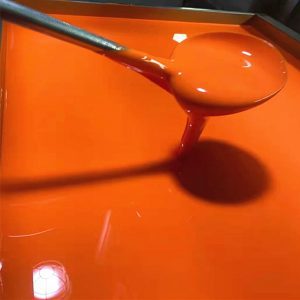PVC Plastisol Material Safety Data Sheet

Introduction of PVC Plastisol
PVC plastisol is a common plastic coating widely used in fields such as wire, cable, and construction materials. However, due to its chemical composition and potential risks during use, it is crucial to use and store PVC plastisol correctly. This document will provide a detailed introduction to the safety techniques of PVC plastisol, aiming to assist users in applying the product in a reasonable and safe manner.
Characteristics
- Composition: PVC plastisol is mainly composed of polyvinyl chloride resin, plasticizer, stabilizer, and other components. Its composition is stable and not easy to volatilize.
- Physical properties: PVC plastisol has the characteristics of high viscosity, good flowability, and strong adhesion. At the same time, it has the advantages of acid and alkali resistance, wear resistance, and good weather resistance.
- Safety and environmental protection: The plastisol does not contain heavy metals, carcinogens, and other harmful substances, which meets environmental protection requirements.
Safe Use
- Storage requirements: PVC plastisol should be stored in a dry, ventilated, and cool warehouse, away from fire and heat sources. Avoid direct sunlight to prevent damage to product quality.
- Protective measures: When using PVC plastisol, protective gloves, goggles, and masks should be worn to prevent liquid from splashing onto the skin, eyes, and respiratory tract. If accidentally in contact with the skin, immediately rinse with plenty of water and seek medical attention.
- Operating precautions: When operating PVC plastisol, avoid generating excessive dust and splashing solution. Do not eat, drink, or smoke during the operation to avoid ingestion or inhalation of harmful substances.
- Ventilation requirements: When using the plastisol, ensure good ventilation conditions in the operating area to prevent gas accumulation and inhalation of harmful gases.
Emergency Handling
- Spillage accident: If PVC plastisol accidentally splashes onto the skin, immediately rinse with plenty of water and seek medical attention. If the liquid enters the eyes, flush with plenty of water for at least 15 minutes and seek medical attention immediately.
- Inhalation accident: If harmful gases from the plastisol are accidentally inhaled, promptly move the patient to a well-ventilated area and ensure clear airways. If experiencing difficulty breathing, seek medical attention immediately.
- Fire accident: PVC plastisol is flammable to a certain extent. In case of a fire, take appropriate fire extinguishing measures such as using foam, carbon dioxide, dry powder, etc. Avoid using water to extinguish the fire to prevent liquid spreading.
Disposal of Plastisol
- Waste classification: The waste of plastisols belongs to hazardous waste and should be classified according to relevant national regulations.
- Disposal method: The waste of PVC plastisol should be handed over to a professional waste disposal company for treatment. It is strictly prohibited to dump or discharge it into the environment at will to avoid pollution to the environment.
- Emission standards: During the waste disposal process, strict compliance with relevant national standards should be followed to ensure that the waste will not cause harm to the environment and human health.
Conclusion
PVC plastisol is an important plastic coating, and its safe use is crucial for protecting human health and environmental safety. By properly storing, using, and scientifically disposing of it, potential risks can be minimized. It is hoped that users can enhance their safety awareness when using PVC plastisol, strictly follow the relevant requirements, and ensure the goals of safe production and environmental protection are achieved.

hi, do you supply pvc plastisol coating?
Thanks for posting pvc plastiol msds. I really enjoyed reading it, especially because it addressed my problem. It helped me a lot and I hope it will help others too.